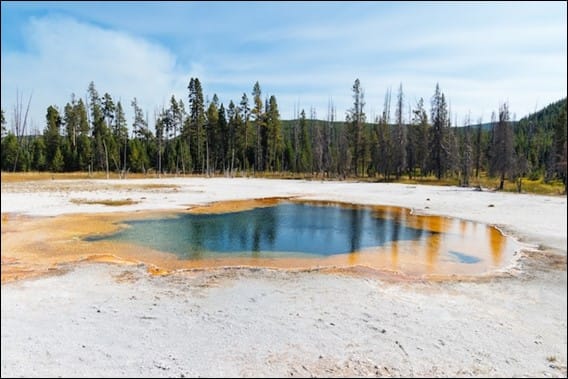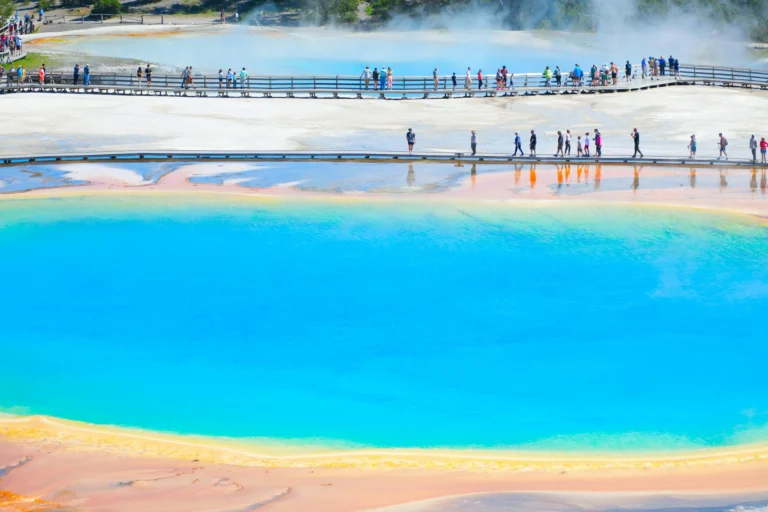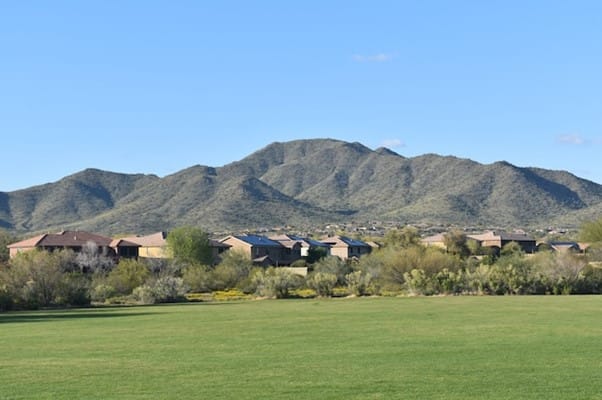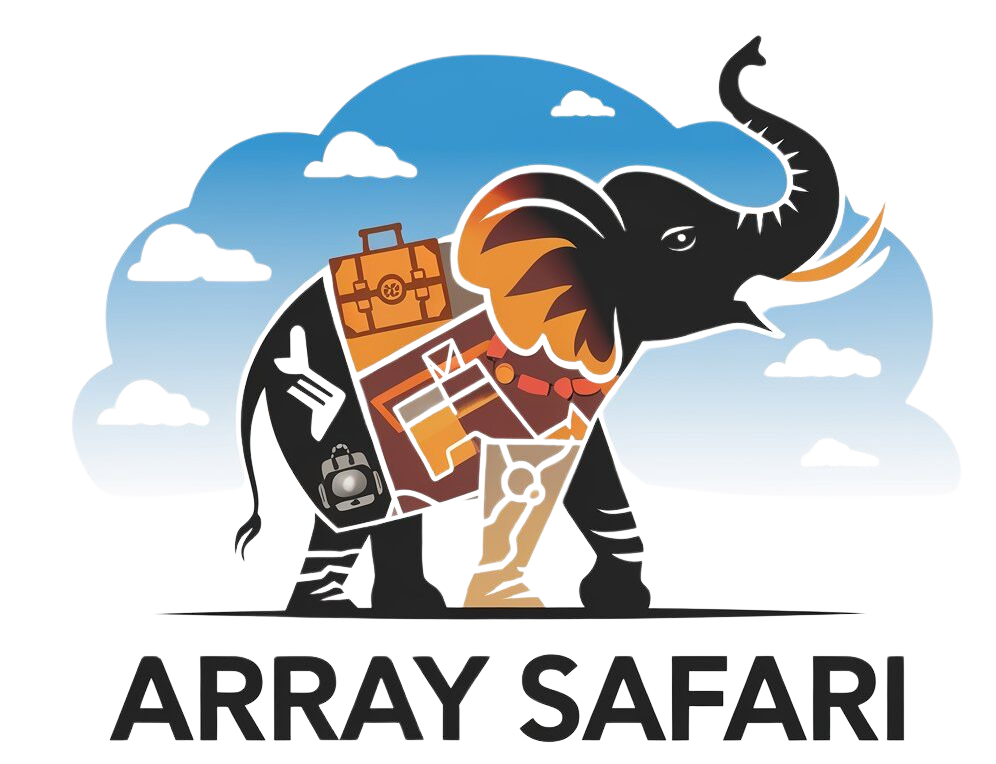The 10 best USA national parks to explore in summer include a selection of the most remarkable national parks in the United States that offer the best experiences during the summer season. These parks are chosen based on factors like accessibility, weather conditions, scenic beauty, and outdoor activities that thrive in warmer months.
Summer is an ideal time to visit national parks, with longer days providing more time for hiking, wildlife spotting, and exploring diverse landscapes. Longer daylight hours, active wildlife, and optimal trail conditions make summer a prime time for national park adventures. Some parks showcase dramatic mountain landscapes, while others feature vast deserts, lush forests, or coastal beauty. Each destination on this list provides a unique experience, from hiking and camping to breathtaking viewpoints and rich biodiversity.
The 10 best USA National Parks to explore in summer include Yellowstone National Park, Yosemite National Park, Glacier National Park, Grand Teton National Park, Zion National Park, Grand Canyon National Park, Mount Rainier National Park, Rocky Mountain National Park, Olympic National Park and Redwood National Park. The 10 best USA national parks to explore in summer are listed below.
Yellowstone national park: Yellowstone national park is renowned for its unique geological features and natural wonders. This is the oldest and the most popular one among the travel enthusiasts.
Yosemite National Park: Yosemite National Park is the icon of America’s natural beauty due to the presence of incredible landscapes and intimidating trail all around it. Both the Northern and Southern regions of the National Park support amazing activities such as camping, hiking, wildlife exploring, etc.
Glacier National Park: Glacier National Park is known as the “Crown of the continent Ecosystem. The enchanting beauty of the national park mesmerizes tourists for its amazing ecosystem.
Grand Teton National Park: Grand Teton National Park is the hub of fishing, hiking, boating, camping, mountaineering, This a huge National park covering area up to 3,10,000 acres.
Zion National Park: Zion National Park has several natural beauties such as mountains, mesas, monoliths, canyons, slot canyons, buttes, natural arches, woodland, and coniferous forest. The best time to visit this national park is from late March to early November.
Grand Canyon National Park: The Grand Canyon National Park nothing less than a wonder and became a World Heritage Site by the UNESCO in 1979. Places like Colorado River, Widforss Trail, Transpet Trail, El Tovar Tower, Lookout, Bright Angel Lodge enhances its beauty up to a greater extent .
Mount Rainier National Park: Mount Rainer national park has a great elevation range from 1600 ft to 14000 ft. The snow ranges of these region provide a great breath-taking view.
Rocky Mountain national park: Rocky Mountain national park consists of 5 prominent regions like Moose and big meadows, Alpine region, Heart of the Peak, Waterfalls, and Backcountry. If you want to witness breath taking views along with chilling temperature then this is the place.
Olympic National Park: Olympic National Park is the best summer national parks in the US consists of a total of 3 prominent ecosystems such as subalpine forest, wildflower meadow, a temperate forest, & the rugged Pacific coast.
Redwood National Park: Redwood National Park is known to preserve about 45% of the old-growth coast redwood forests that are remaining on the Earth. It is a great natural habitat for the protection of Steller’s sea lion, grassland prairie, chinook salmon, and northern spotted owl.
1) Yellowstone National Park:
Yellowstone National Park is situated in Wyoming, Montana and Idaho. It is on the top of a dormant volcano and is home to more than 500 geysers and hot springs. This national park is a hub of wonders like the Yellowstone Grand Canyon to wildlife like America’s largest buffalo herd, wolves, and grizzly bears. Around 50% of the world’s hydrothermal features are at Yellowstone National Park, creating an effect that makes the ground appear on fire.
Yellowstone National Park, America’s first national park, offers truly unique experiences like spectacular hiking trails, beautiful views, Old Faithful, and geysers shooting water 100 feet into the air. It was established in 1872 in Wyoming and to date remains the most popular national park. The Yellowstone National Park is spread across 3500 miles, and extends into parts of Montana and Idaho, making it one of the largest national parks in the US.
Old Faithful, the most famous of all the geysers, is one of the most popular ones. This is one of the best national parks to visit in summer, as many of the world’s great biodiversity hotspots unfurl the best to visitors. The visitors can explore different types of animals, including herds of bison roaming freely, wolves, and bears. Yellowstone can be rated as one of the best national parks in summer.
The camping arrangement at Yellowstone National Park is very good. Travelers love to enjoy their rest time in the lap of natural beauty surrounding them. Yellowstone offers an unforgettable experience, combining natural wonders, outdoor activities, and the chance to connect with nature in the purest form.
2) Yosemite National Park:
Yosemite National Park is located in California, United States. It is known as the icon of America’s natural beauty. Yosemite Valley is perfect for trekking adventures. The National Park has two regions, northern and southern. Northern Yosemite is a national park’s high country, fundamentally alpine with rugged terrain for hiking, camping, and exploring.
The trekkers, here, find giant granite domes, craggy peaks, stands of ancient trees, and wildflower-studded meadows that embody the austere beauty of the High Sierra. Tioga Road is the highway towards the Northern Yosemite, the main artery through the region. The elevation is steady from about 6000 feet at Crane Flat to around 10000 feet at Tioga Pass. This Pass opens in May or June making it one of the best national parks to visit in June.
Big Oak Flat Road is the runway to Northern Yosemite’s high country. This road is a sylvan parade of trees as it gains elevation towards Crane Flat. Pine, fir, oak, and ancient stands of giant sequoias like Tuolumne and Marced groves rise just off the road. Crane Flat is covered with meadows with a variety of wildflowers. Here the Crane Flat Snow Play Area is the most popular place for sledding and snow play. Hetch Hetchy Valley is one of the park’s less-visited gems with soaring peaks, steep canyons, and thundering waterfalls.
Of all these scenic views, Tioga Road rises above. This 46-mile drive from Crane Flat to Tioga Pass gains 4000 feet in elevation cruising through glaciated granite wonderland like Olmsted Point, roadside domes, and peaks along with views of Tenaya Lake and Tuolumne Meadows.
3) Glacier National Park:
Glacier National Park is located in northwest Montana and is a wonderful sight. Here 1.5 million square mile area is untouched by human development and represents the vast, unlimited beauty of nature. It has only one road that connects the west and east entrances of the park. It is surrounded by lush green mountain peaks and tree-lined valleys to offer excellent scenic landscapes.
Glacier National Park has more than 130 named lakes, more than 1000 different species of plants, and hundreds of species of animals. This huge pristine ecosystem is the center of attraction, hence rightly called as the “Crown of the continent Ecosystem”. This region, now called Glacier National Park, was inhabited by Native Americans.
After the establishment of the park on May 11, 1910, several hotels were built by the Great Northern Railway. Those are now listed as National Historic Landmarks and about 350 locations are on the National Register of Historic Places. The park has numerous ecosystems, from prairie to tundra. The easternmost forests of western redcedar and hemlock grow in the southwest portion. Forest fires are very common, so much so that in the year 1936 alone, there were 64 fires.
Glacier National Park shares a border with Waterton Lakes National Park in Canada. Combined, these two parks are designated as the world’s first International Peace Park. Both parks are also Biosphere Reserves and World Heritage Sites.

4) Grand Teton National Park:
Grand Teton National Park is located in northwestern Wyoming, United States. The park is spread across an area of 310000 acres (1300 km sq) and it includes major peaks of the 40-mile long (64 km) Teton Range and most of the northern sections of Jackson Hole. Grand Teton Park is just 10 miles south of Yellowstone National Park and is connected to it through John D. Rockfellar Jr. Memorial Parkway. The human history of Grand Teton dates back to at least 11000 years when Paleo-Indians migrated to the region to pursue food and supplies and then others migrated.
It has more than 1000 species of vascular plants, 300 species of birds, dozens of species of mammals, more than a dozen fish species, and a few species of reptiles and amphibians. Grand Teton National Park offers tourists a great chance for fishing, hiking, and other activities. With more than 1000 drive-in campsites and around 200 miles of hiking trails, the park provides access to backcountry camping areas.
The park has features to catch Snake River fine-spotted cutthroat trout making it one of the best national parks to visit in July and August. Grand Teton National park offers great opportunities for adventures like mountaineering, camping & hiking, boating & fishing, and other winter activities like snowshoeing and cross-country skiing. It is also a huge tourist hub where there are many visitor centers, Craig Thomas Discovery and Visitor Center, being one of them.
5) Zion National Park:
Zion National Park is a national park of the US located in southwestern Utah near the town of Springdale. The park is situated at the junction of the Great Basin, Colorado Plateau, and Mojave Desert regions, having a unique geography and wide life zones that allow for animal diversity and unusual plants. Various plant species, 75 mammals species (19 of them of bat), about 289 bird species, and 32 reptile species inhabit the park’s four zones; riparian, desert, coniferous forest, and woodland. Several natural beauties like canyons, buttes, mountains, slot canyons, mesas, natural arches, and monoliths can be enjoyed by the tourists making it the best national park in August.
Talking about the height and elevation gain, the lowest point in the park is 3666 feet at Coalpits Wash and the highest peak is 8726 feet at Horse Ranch Mountain. The most prominent feature, however, is Zion Canyon, 15 miles long and up to 2640 feet deep, in this 229 sq mile long Zion National Park. The canyon walls are tan-colored and reddish of Navajo Sandstone eroded by the North Fork of the Virgin River. The history of human habitation dates back 8000 years ago with small family groups of Native Americans.
The sole purpose of Zion National Park is to preserve the grand geology including Zion Canyon and a labyrinth of deep and brightly colored Navajo sandstone canyons formed by the process of erosion at the margin of the Colorado Plateau; to safeguard the park’s wilderness character and its wild and scenic river values; to protect evidence of human history; and to provide for scientific research and the enjoyment and enlightenment of the people.
The tourists, with the help of appointed rangers, can perform various activities like horseback riding trips, nature walks, and evening programs, available from late March to early November. The tourists can also plan trekking trails, seven with round-trip times of half an hour to four hours at Zion Canyon. The most popular trails are Taylor Creek and Kolob Arch. The travelers can enjoy their rest time camping or lodging as per their choice of accommodation.
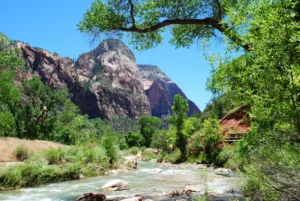
6) Grand Canyon National Park:
Grand Canyon National Park is located in northwestern Arizona of the United States, the 15th site to be named a national park. The park’s central feature is the Grand Canyon, a gorge of the Colorado River, which is one of the Wonders of the World. The park is spread across 1217262 acres (4926 k sq) of unincorporated area in Coconino and Mohave counties. In just 2023, the park saw more than 4.7 million recreational visitors. The Grand Canyon was also designated as a World Heritage Site by UNESCO in 1979. On February 26, 2019, the park celebrated its 100th anniversary. The nearest cities are Fredonia, Arizona on the North Rim and Tusayan, Arizona on the South Rim.
The Grand Canyon’s history dates back to the 1880s after the railroads were built and pioneers developed infrastructure and early tourism. The creation of the park was the early success of the conservation movement. A second Grand Canyon National Monument to the west was proclaimed in 1932. Grand Canyon National Park was extended by including Marble Canyon National Monument and the Colorado River to Lees Ferry, later. In 2010, the Grand Canyon National Park was honored with its own coin under the America the Beautiful Quarters program.
The Grand Canyon offers a variety of activities that tourists can indulge in like in the North Rim, they can have magnificent sightseeing over viewpoints like Point Imperial, Roosevelt Point, and Cape Royal. Enthusiasts can also make several treks at different trails. The trails can be Widforss Trail, Jim’s Trail, Transept Trail, or North Kaibab Trail.
All these offer it as the best national park in August when the weather is really fresh and rejoicing. In the South Rim, the tourists can take on activities like a driving tour of 35 miles, a walking tour of Rim Trail, Mather Point View, and a tour in helicopters or small airplanes that make their trip forever memorable. The Grand Canyon National Park also hosts historic buildings like Hopi House, El Tovar Tower, Bright Angel Lodge, Buckey O’Neill Cabin, Lookout Studio, and Kolb Studio.

7) Mount Rainier National Park:
Mount Rainier National Park is located in southeast Pierce County and northeast Lewis County in Washington State, US. This is the fourth national park in the US established on March 2, 1899. It is spread across 236381 acres (956 km sq) including all of Mount Rainier, a 14410 feet stratovolcano. The mountain appears as a sudden rise from the surrounding land with elevation in the park ranging from 1600 feet to over 14000 feet, with the highest point being Cascade Range. This beautiful mountain is surrounded by equally breathtaking valleys, waterfalls, subalpine meadows, and 91000 acres of old-growth forest. Over 25 glaciers descend the flanks of the volcano, which is always among the clouds dumping heavy rain and snow.
Mount Rainier is covered by glaciers and snowfields of 35 sq miles and it is surrounded by Wonderland Trail. Carbon Glacier is the largest glacier by volume and Emmons Glacier is the largest glacier by area. Mount Rainier is the most liked peak by mountaineers with about 10000 attempts yearly and half of them make it to the summit.
The purpose behind this national park is to protect and preserve unimpaired, the majestic icon of Mount Rainier, a glaciated volcano, along with its natural and cultural resources, dynamic processes, and values. The tourists here can understand, experience, and care for the park environment, and also get the wilderness experiences and maintain its values. As a historic landmark district, the Mount Rainier National Park is administratively listed on the National Register of Historic Places. The park hosts a wide range of flora and fauna that is at its best in peak season making it one of the best national parks to visit in summer.
The flora consists of Alpine Meadows & Barren, or Alpine Tundra, a potential vegetation type with an Alpine Meadow, a potential vegetation form. The park has varied vegetation reflecting the climatic and environmental conditions. It has more than 960 vascular plant species and more than 260 nonvascular plant species identified. The fauna includes black bears, mountain goats, deer, red foxes, snowshoe hares, raccoons, bobcats, skunks, and many others. The fish in the lake include cutthroat trout, bull trout, mountain whitefish, anadromous fish, and others.
8) Rocky Mountain National Park:
Rocky Mountain National Park is located 55 miles northwest of Denver in north-central Colorado within the Front Range of the Rocky Mountains. Among the national parks to visit in July, this is the one tourists choose. The park is situated between Estes Park to the east and Grand Lake to the west. The center of the park is the eastern and western slopes of Continental Divide running into the park. The main features of the park are alpine lakes, mountains, and a wide variety of wildlife in the changing atmosphere and climate. Rocky Mountain National Park covers 265461 acres (1074 sq km) with an additional 253059 acres (1024 sq km) of US Forest Service wilderness along with the park boundaries. /rivers and streams on the western side of the Continental Divide flow toward the Pacific Ocean and on the eastern side, it flows to the Atlantic.
Rocky Mountain National Park is one of the highest national parks in the US, with elevations from 7860 feet to 14259 feet, the highest point being Longs Peak. Trail Ridge Road is the highest paved through-road in the country offering tourists a scenic view. On the north side of the park, the Mummy Range has thirteen peaks including Hagues, Mummy Mountain, Ypsilon Mountain, Fairchild Mountain, and Mount Chiquita.
The five regions of the park, all are equally picturesque and joyous to the visitors. These regions are areMoose and big meadows, Alpine region, wilderness, Heart of the park, and waterfalls and backcountry. The climate of the park is typically a subarctic climate with cool summers and year-round precipitation. According to the US Department of Agriculture, the Plant Hardiness zone at Bear Lake Ranger Station shows an average annual extreme minimum temperature of -15.2 degrees F. The higher elevation receives twice as much precipitation as lower elevation areas in the form of deep winter snowfall. Wildflowers bloom from late June to early August making it a good national park summer too.
Rocky Mountain National Park is in Colorado which has very diverse plant and animal environments in the United States, partly because of the dramatic temperature differences arising from varying elevation levels and topography. Dry climates give a temperature drop of 5 degrees F for every 1000-foot increase. The park is designated as a World Biosphere Reserve to protect the natural resources. Biodiversity includes afforestation and reforestation, ecology, inland bodies of water, and mammals.
The tourists here can engage themselves in many activities like trekking at many trails, rock climbing, mountaineering at different peaks, fishing at the lakes, and backcountry skiing. Tourists need to stay away from bears as bear encounters are very common here.
9) Olympic National Park:
Olympic National Park is considered among the best summer national parks in the US. The park is located in Washington, on the Olympic Peninsula. It has four regions: alpine areas, the Pacific coastline, the west-side temperate rainforest, and the forests of the drier east side. In the park, there are three prominent ecosystems including a subalpine forest and wildflower meadow, a temperate forest, and the rugged Pacific coast.
Because of the park’s specific location, it developed many endemic plant and animal species. The southwestern coastline of the Olympic Peninsula is also the northernmost non-glaciated region on the Pacific coast of North America. The park contains an estimated 366000 acres (1480 sq km) of old-growth forests. Forest fires are not much in the rainforests of the park’s western side but the heavy drought was experienced back in 2015.
The animals that inhabit this park include skunks, chipmunks, squirrels, six species of bat, river otters, black bears, mountain goats, snowshoe hares, and moles, along with dolphins, whales, seals, and other aquatic animals. There are many roads in the park but none really penetrate deep inside. The park also has a network of trails varying in size and toughness, making it difficult to complete on weekend days. Because of dryness in the months of July, August, and September, this is one of the best national parks to visit in August.
Tourists here can explore the unique possibility of backpacking along the beach. The length of the coastline allows tourists to plan a perfect multi-day trip, with the entire day spent walking on the beach. During winter, the viewpoint of Hurricane Ridge gives the opportunity to participate in winter sports like skiing and snowboarding. Rafting and boating at lakes Ozette Lake, Lake Crescent, and Lake Quinault.
10) Redwood National Park:
Redwood National and State Parks, are a complex of one United States National Park and three California state parks located along the coast of northern California. Redwood National Park is a part of this. The park is over 139000 acres (560 sq km) and preserves 45 percent of all remaining old-growth coast redwood forests. Located in Del Norte and Humboldt counties, the parks protect the endangered coast redwood, the tallest, among the oldest, and one of the most massive tree species on Earth that thrives in the humid temperate rainforest. The park region is highly seismically active and prone to tsunamis. The park preserves 37 miles of pristine coastline, indigenous flora, fauna, grassland prairie, cultural resources, waterways, and threatened animal species like chinook salmon, northern spotted owl, and Steller’s sea lion.
The tourists can get to see coastal redwood discovered in 2006 in the park, the tallest living tree, named Hyperion at 380 feet, followed by Helios at 377 feet, and Icarus at 371 feet. They can observe some other flora like Douglas-fir trees. Closer to the ocean, red alder grows near salt water. The tallest known Sitka spruce also grows in the park. The faunas like black bears, coyotes, cougars, bobcats, river otters, beavers, and black-tailed deer make their presence felt. Roosevelt Elk is the large mammal at the park. Different species of bats like big brown bats, minks, red squirrels, moles, brush rabbits, and many more animals live in the park.
The parks are part of temperate forests near the Pacific Ocean with temperatures in the range of 40 to 60 degrees F. Tourists can enjoy hiking, horseback riding, mountain biking, and kayaking at the park. There are campsites for the accommodation of tourists where they can enjoy the rest of the time.
These national parks to visit in summer are some great locations for tourists and nature lovers can plan to make a trip. Each one of the national parks has one specialty though geographically all might look the same. Nature and culture can be different under different circumstances but only to give pleasure in the lap of mother nature.
1) Why are the national parks in the US worth visiting?
The national parks in the US are very cozy and refreshing in the summer. The atmosphere is healthy and cheering so it gives a sense of great pleasure.
2) What are the activities available inside the national park?
The activities inside national parks include trekking, hiking, horse riding, sightseeing, river rafting, fishing, and many others.
3) Are the national parks equipped for the accommodations?
Yes, the administrations make an effort to arrange accommodation in the form of campgrounds and hotels at affordable costs.
4) How many days are needed to visit a national park in the US?
For a limited area, a weekend can be enough but if the entire national park is to be explored then 3-4 days are ideal.
5) Are we safe from wildlife at national parks?
Wild animal activity is in the controlled areas by the forest department, however, the tourists also have to cooperate with rangers by following the rules and discipline.

